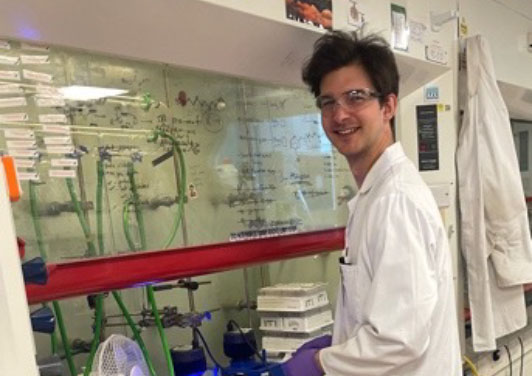DNA is made up of four bases (nucleotides), cytosine, guanine, adenine and thymine which are arranged in the genome in many different sequences. These bases can also be modified by cells to produce new, `epigenetic’ bases. These epigenetic changes do not alter the DNA sequence but do affect gene expression, determining whether genes are switched on and off. One such modification is DNA methylation, which is important to the regulation of gene expression during growth & development and in genetic diseases such as cancer.
DNA sequencing is a laboratory technique used to determine the order of nucleotides in DNA.
Methods which allow the epigenetic markers to be detected during DNA sequencing are relevant in academic and therapeutic contexts, with particular applications in the diagnosis and characterisation of genetic disorders and aid the development of “epigenetic drugs”.
However, there are challenges to detecting these markers. Ben Mortishire-Smith, a PhD student in the Balasubramanian Group who led the research, says, “Although these important epigenetic markers are scattered throughout our genetic material, they’re invisible to conventional DNA sequencing. Therefore, we apply chemical treatments to the DNA which convert the modified bases into a form that can be detected during routine DNA sequencing.” The study looked at developing a new, DNA-compatible treatment that could selectively convert a modified cytosine base, 5-carboxycytosine (5caC), using mild chemical conditions.
The research resulted in a novel method that uses visible-light photochemistry to detect 5-carboxycytosine in DNA strands. This involves a chemical reaction which selectively converts 5caC into 5,6-dihydrouracil (DHU), a base which can be detected in sequencing, while leaving other unmodified bases untouched. Ben explains, “we discovered and applied a novel chemical reaction which uses an iridium photocatalyst and a thiol reagent to convert 5caC into DHU. Using this combination of reagents, the reaction is activated when blue light is shone on the solution from LEDs – it all feels very sci-fi doing chemistry with coloured lights.” He goes on to say, “The use of light-mediated chemistry in this context is exciting and advantageous because the chemical conditions involved are mild and don’t degrade DNA as significantly as many existing treatments - established methodologies such as bisulfite sequencing are known to degrade DNA samples quite heavily which causes various problems during analysis. In comparison, because the iridium catalyst can access different chemical transformations which are light-driven versus heat-driven, this conversion is complete in a short space of time even at room temperature and more of the DNA sample is preserved”.
This ground-breaking research is the first example of a technique within the class of photochemical transformations which can directly convert the “identity” of a DNA base. Ben is excited about the new method, saying, “light-activated modification of biological molecules such as proteins and DNA is a fast-growing area of chemical biology. We hope that our study will help pave the way to further applications of photochemistry in the context of DNA sequencing.”
You can read the full paper here.
